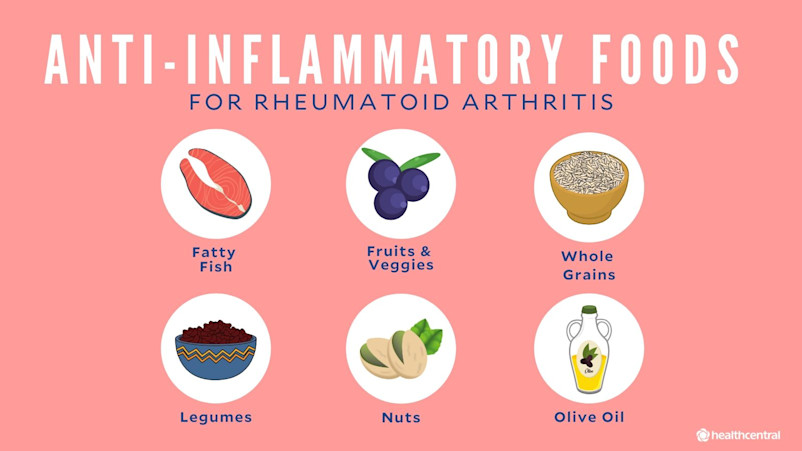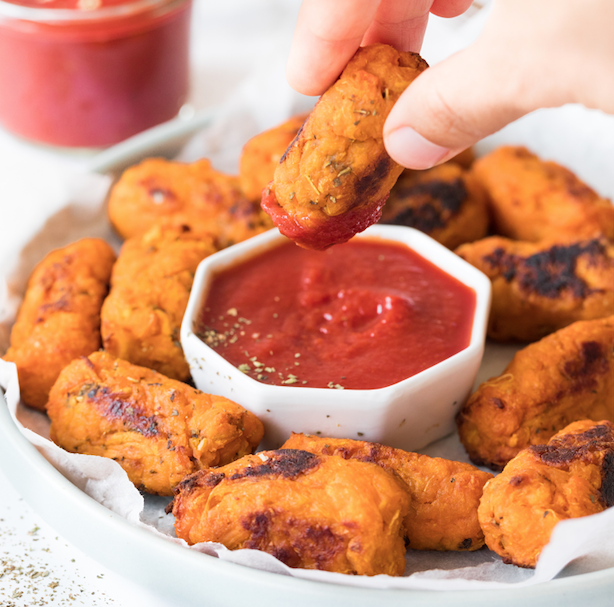VACCINATED PEOPLE MAY BE MORE VULNERABLE TO VARIANTS

As soon as vaccine companies announced they were developing a COVID-19 vaccine, doctors, scientists, researchers and other experts raised warnings1,2 about the problematic history of coronavirus vaccines and their propensity to produce antibody-dependent enhancement (ADE), which could make vaccinated individuals more susceptible to infection by SARS-CoV-2 or its variants.
It is also called paradoxical immune enhancement (PIE), which I believe is a more accurate description of what is happening.
Among those issuing early warnings were Robert F. Kennedy Jr., who in my interview with him — featured in “Well-Known Hazards of Coronavirus Vaccines” — recounted previous failed coronavirus vaccine trials in which he said the vaccinated animals died when exposed to the wild virus.
Considering all previous coronavirus vaccine efforts have failed for this reason, it seemed reasonable to suspect that a COVID-19 vaccine might have similar problems, and that such effects might remain hidden for some time since animal testing was bypassed. Recent research suggests such fears might still be warranted, although conclusive evidence that ADE is in fact occurring has not been produced.
Trial Subjects Have Not Been Informed of ADE Risk
The October 28, 2020, paper,3 “Informed Consent Disclosure to Vaccine Trial Subjects of Risk of COVID-19 Vaccine Worsening Clinical Disease,” stressed that “COVID-19 vaccines designed to elicit neutralizing antibodies may sensitize vaccine recipients to more severe disease than if they were not vaccinated,” and criticized vaccine makers for not clearly informing participants in current vaccine trials of this risk.
“Vaccines for SARS, MERS and RSV have never been approved, and the data generated in the development and testing of these vaccines suggest a serious mechanistic concern:
That vaccines designed empirically using the traditional approach (consisting of the unmodified or minimally modified coronavirus viral spike to elicit neutralizing antibodies), be they composed of protein, viral vector, DNA or RNA and irrespective of delivery method, may worsen COVID-19 disease via antibody-dependent enhancement (ADE),” the paper stated.4
“This risk is sufficiently obscured in clinical trial protocols and consent forms for ongoing COVID-19 vaccine trials that adequate patient comprehension of this risk is unlikely to occur, obviating truly informed consent by subjects in these trials.
The specific and significant COVID-19 risk of ADE should have been and should be prominently and independently disclosed to research subjects currently in vaccine trials, as well as those being recruited for the trials and future patients after vaccine approval, in order to meet the medical ethics standard of patient comprehension for informed consent.”
What Is ADE?
What exactly is ADE, and what does it mean? In a nutshell, it means that rather than enhance your immunity against the infection, the vaccine actually enhances the virus’ ability to enter and infect your cells, resulting in more severe disease than had you not been vaccinated.5
Needless to say, this is the exact opposite of what a vaccine is supposed to do. The 2003 review paper “Antibody-Dependent Enhancement of Virus Infection and Disease” explains it this way:6
“In general, virus-specific antibodies are considered antiviral and play an important role in the control of virus infections in a number of ways. However, in some instances, the presence of specific antibodies can be beneficial to the virus. This activity is known as antibody-dependent enhancement (ADE) of virus infection.
The ADE of virus infection is a phenomenon in which virus-specific antibodies enhance the entry of virus, and in some cases the replication of virus, into monocytes/macrophages and granulocytic cells through interaction with Fc and/or complement receptors.
This phenomenon has been reported in vitro and in vivo for viruses representing numerous families and genera of public health and veterinary importance … For some viruses, ADE of infection has become a great concern to disease control by vaccination.”
Vaccinated People More Susceptible to South African Variant
As feared from the beginning, vaccinated individuals do appear to be more susceptible to infection by certain variants of SARS-CoV-2, although it remains to be seen whether they are more prone to serious illness.
A study by researchers at Tel Aviv University and Clalit Health Services in Israel found the South African variant of SARS-CoV-2, dubbed B.1. 351 — which presently accounts for about 1% of COVID-19 cases in Israel — affects people vaccinated with Pfizer’s mRNA vaccine to a greater extent than unvaccinated people.7,8,9,10
The researchers compared 400 individuals who had tested positive for the B.1.351 variant two weeks or more after receiving at least one dose of Pfizer’s COVID-19 vaccine against 400 unvaccinated individuals who had been infected.
Among the 150 people who were fully vaccinated, having received both shots of the vaccine, the variant was eight times more prevalent than in unvaccinated individuals (5.4% compared to 0.7%).
An estimated 53% of Israel’s 9.3 million inhabitants have received the Pfizer vaccine.11 While Moderna’s vaccine is also available in Israel, it was not included in this investigation. According to professor Adi Stern, Ph.D.,12 at Tel Aviv University, who said the findings took her by surprise:13
“We found a disproportionately higher rate of the South African variant among people vaccinated with a second dose, compared to the unvaccinated group. This means that the South African variant is able, to some extent, to break through the vaccine’s protection.”
For clarity, while the risk of infection appears significantly greater, it is still unknown whether the variant might generate more serious illness in vaccinated individuals. The study did not report disease outcomes, stating it would be “statistically meaningless” to do so since the number of vaccinees infected was too low.
That said, professor Ran Balicer, director of research at Clalit Health Services, which provided assistance for the study, noted this is the first study “to be based on real-world data, showing that the vaccine is less effective against the South Africa variant, compared to both the original virus and the British variant.”14
Other Research Suggests B.1.351 May Evade First-Gen Vaccines
Another recent study,15 reported by Times of Israel,16 was done by researchers at Ben-Gurion University of the Negev. Here, they analyzed blood samples to assess vaccine response to the South African variant. As reported by Times of Israel:17
“The researchers collected blood samples from 10 people who recovered from COVID-19, five people who received the first dose of the vaccine, and 10 people who also received the second. Samples were drawn from participants 21 days after the first dose, or 10 days after the second. They then measured the antibodies’ ability to protect against infection.”
The study18 found that while the Pfizer vaccine produced high levels of neutralizing antibodies against the generic strain of SARS-CoV-2 and the British variant, it fared worse against the South African variant.
Overall, the neutralization potency of the Pfizer vaccine was 6.8 times lower for the B.1.351 variant compared to the generic strains. It was also less effective against strains that have attributes of both the British and the South African variants. According to the authors:19
“Our study validates the importance of the Pfizer vaccine, but raises concerns regarding its efficacy against specific SARS-CoV-2 circulating variants … Our data also indicate that the Pfizer vaccine is moderately compromised against SA-N501Y/K417N/E484K pseudo-variants.
Average decrease in mean neutralization potential of the vaccinated sera against this pseudovirus was 6.8-fold, relative to wild-type SARS-CoV-2 pseudovirus. This result is only partly aligned with recent conclusions from Pfizer,20 reporting that its vaccine is almost similarly efficient against the SA [South African] variant as wild-type SARS-CoV-2.
A Moderna report21 also documented that its vaccine is 6.4-fold less efficient in neutralizing SA-B.1.351 variant, relative to neutralization of the wild-type SARS-CoV-2. However, their conclusion indicated that such a reduction is not clinically significant.
In our mind, the clinical significance of a 6.8-fold-reduced neutralization potency of convalescent or post-vaccination sera against the SA strain remains to be determined and raises concerns about vaccine efficiency against current or future SARS-CoV-2 variants.
Overall, these results call for close attention to variant spread. Moreover, development of new vaccines with improved neutralizing potency against specific SARS-CoV-2 variants may be required.”
As you’d expect, vaccine makers are already hard at work tweaking their formulas to target various mutations of the virus, so don’t be surprised if all of a sudden vaccinated individuals start getting called back for additional shots. As reported by STAT News:22
“Vaccine makers are working on booster shots specifically targeting B.1.351 or that could defend against multiple strains of the coronavirus, and regulators are considering how the updated shots could be authorized without needing to go through the full gamut of clinical trials.”
Pfizer Study Reports Drop in Effectiveness Against B.1.351
Last but not least, Pfizer’s own investigation, published in The New England Journal of Medicine23 March 8, 2021, found its vaccine was about two-thirds less effective, in terms of neutralizing potency, against the South African variant, B.1.351, compared to other forms of the virus.
“It can be difficult to extrapolate what such lab experiments mean for what happens if someone who received the vaccine is exposed to the variant. For one, these experiments only look at how one arm of the immune system, called neutralizing antibodies, responds to the modified virus,” STAT News reports.24
“The vaccines generate a range of immune fighters, including other types of antibodies and T cells, so it’s possible that overall people retain more of their defenses in fending off the virus. It’s also possible that even though neutralizing antibodies don’t work as well against the variant, they can still mount enough activity to have an impact.”
What STAT News does not mention is that the vaccines may also generate nonneutralizing (aka binding) antibodies25 which, instead of preventing infection, can trigger ADE, a paradoxical immune enhancement that increases your susceptibility to infection and more severe illness.
Aside from the studies already mentioned at the beginning of this article, many others have raised concerns about coronavirus vaccines and ADE in particular. Among them is the May 2020 mini review26 “Impact of Immune Enhancement on COVID-19 Polyclonal Hyperimmune Globulin Therapy and Vaccine Development.” As in many other papers, the authors point out that:27
“While development of both hyperimmune globulin therapy and vaccine against SARS-CoV-2 are promising, they both pose a common theoretical safety concern. Experimental studies have suggested the possibility of immune-enhanced disease of SARS-CoV and MERS-CoV infections, which may thus similarly occur with SARS-CoV-2 infection …
Immune enhancement of disease can theoretically occur in two ways. Firstly, non-neutralizing or sub-neutralizing levels of antibodies can enhance SARS-CoV-2 infection into target cells. Secondly, antibodies could enhance inflammation and hence severity of pulmonary disease …
Animal studies … have shown that the spike (S) protein-based vaccines (specifically the receptor binding domain, RBD) are highly immunogenic and protective against wild-type CoV challenge … However, immunization with some S protein based CoV vaccines have also displayed signs of enhanced lung pathology following challenge.
Hence, besides the choice of antigen target, vaccine efficacy and risk of immunopathology may be dependent on other ancillary factors, including adjuvant formulation, age at vaccination … and route of immunization.”
Th2 Immunopathology Is Another Potential Risk
Another potential risk is that of Th2 immunopathology, especially among the elderly. As reported in a PNAS news feature:28
“Since the 1960s, tests of vaccine candidates for diseases such as dengue, respiratory syncytial virus (RSV), and severe acute respiratory syndrome (SARS) have shown a paradoxical phenomenon: Some animals or people who received the vaccine and were later exposed to the virus developed more severe disease than those who had not been vaccinated.
The vaccine-primed immune system, in certain cases, seemed to launch a shoddy response to the natural infection …
This immune backfiring, or so-called immune enhancement, may manifest in different ways such as antibody-dependent enhancement (ADE), a process in which a virus leverages antibodies to aid infection; or cell-based enhancement, a category that includes allergic inflammation caused by Th2 immunopathology. In some cases, the enhancement processes might overlap …
Some researchers argue that although ADE has received the most attention to date, it is less likely than the other immune enhancement pathways to cause a dysregulated response to COVID-19, given what is known about the epidemiology of the virus and its behavior in the human body.
‘There is the potential for ADE, but the bigger problem is probably Th2 immunopathology,’ says Ralph Baric, an epidemiologist and expert in coronaviruses … at the University of North Carolina at Chapel Hill.
In previous studies of SARS, aged mice were found to have particularly high risks of life-threatening Th2 immunopathology … in which a faulty T cell response triggers allergic inflammation, and poorly functional antibodies that form immune complexes, activating the complement system and potentially damaging the airways.”
Full Extent of Risks Remain To Be Seen
Whether or not COVID-19 vaccines can trigger ADE or Th2 immunopathology remains to be seen. As or right now, studies suggest vaccinated individuals are at increased risk of contracting lab-confirmed infection with variants such as the South African B.1.351 strain, but there’s no telling whether they actually get sicker than unvaccinated individuals.
Similarly, while there are now hundreds of cases of fully vaccinated individuals having being diagnosed with COVID-19, some of whom have died as a result,29 it’s too early to tell whether ADE is at play. We’re currently moving into summer in the Western hemisphere, a time when respiratory viruses tend to be less prevalent in general, so I suspect the real test will come this fall and winter.
So, while some argue that ADE is a “non-issue” with COVID-19 vaccines simply because we haven’t seen any signs of it yet,30 even with new variants, I have my doubts. I suspect we might still see it once flu season sets in. Besides, ADE is far from the only potential problem. There are many other potential side effects, some of which may take months or years to develop, while others may be lethal within days or even hours.
The vaccines may also be problematic for already immunosuppressed patients. The reason for this is because they don’t develop a robust neutralizing antibody response from the vaccines, and there’s research31 warning that developing a poor neutralizing antibody response after an initial exposure to certain coronaviruses might result in more severe illness upon re-exposure. Might the same apply if you fail to develop robust neutralizing antibodies in response to mRNA gene therapy?
A recent JAMA study32,33 found only 17% of organ transplant recipients mounted detectable antibodies after their first dose of Pfizer or Moderna mRNA vaccine. Among patients taking antimetabolites, only 8.75% had detectable antibodies against SARS-CoV-2 following vaccination. As noted by the authors:
“Given this observation, the CDC should update their new guidelines for vaccinated individuals to warn immunosuppressed people that they still may be susceptible to COVID-19 after vaccination. As the CDC guidelines are currently written, they assume that vaccination means immunity.
Our study shows that this is unlikely for most transplant recipients, and one could guess that our findings (especially those concerning anti-metabolites) could also apply to other immunosuppressed patients, such as those with autoimmune conditions.”
In my view, there are still so many potential avenues of harm and so many uncertainties, I would encourage everyone to do your homework, keep reading and learning, weigh the potential pros and cons, and take your time when deciding whether to get any of these COVID-19 gene therapies
-
We are in this Together!
-People Start to Heal The Moment They Are Heard-Health and Wellness Associates
EHS Telehealth

- 1 Nature Microbiology September 9, 2020; 5: 1185-1191
- 2 Hum Vaccin Immunother. December 1, 2020; 16(12): 3055-3060
- 3, 4 International Journal of Clinical Practice, October 28, 2020 DOI: 10.111/ijcp.13795
- 5 PNAS.org April 14, 2020 117 (15) 8218-8221
- 6 Viral Immunology 2003;16(1):69-86
- 7, 14 Epoch Times April 11, 2021
- 8, 13 Reuters April 10, 2021
- 9, 11 Washington Examiner April 11, 2021
- 10 Medical Xpress April 11, 2021
- 12 Tel Aviv University Adi Stern
- 15, 18, 19 Cell Host & Microbe March 20, 2021
- 16, 17 The Times of Israel March 22, 2021
- 20 Nature Medicine February 8, 2021
- 21 BioRxiv January 25, 2021 DOI: 10.1101/2021.01.25.427948
- 22, 24 STAT News February 17, 2021
- 23 New England Journal of Medicine March 8, 2021: DOI: 10.1056/NEJMc2102017
- 25 Science Direct Binding Antibody
- 26, 27 EBioMedicine 2020 May; 55: 102768
- 28 PNAS April 14, 2020 117 (15) 8218-8221
- 29 The Defender April 6, 2021
- 30 Medpage Today March 16, 2021
- 31 PLOS Pathogens 2017 Aug; 13(8): e1006565
- 32 JAMA March 15, 2021 (Epub ahead of print)
- 33 Medpage Today March 15, 2021 (Archived)
















